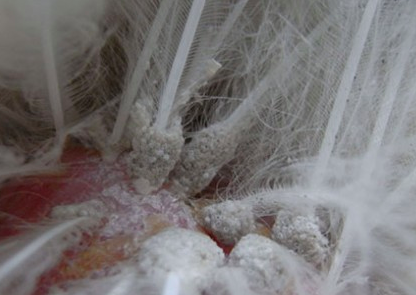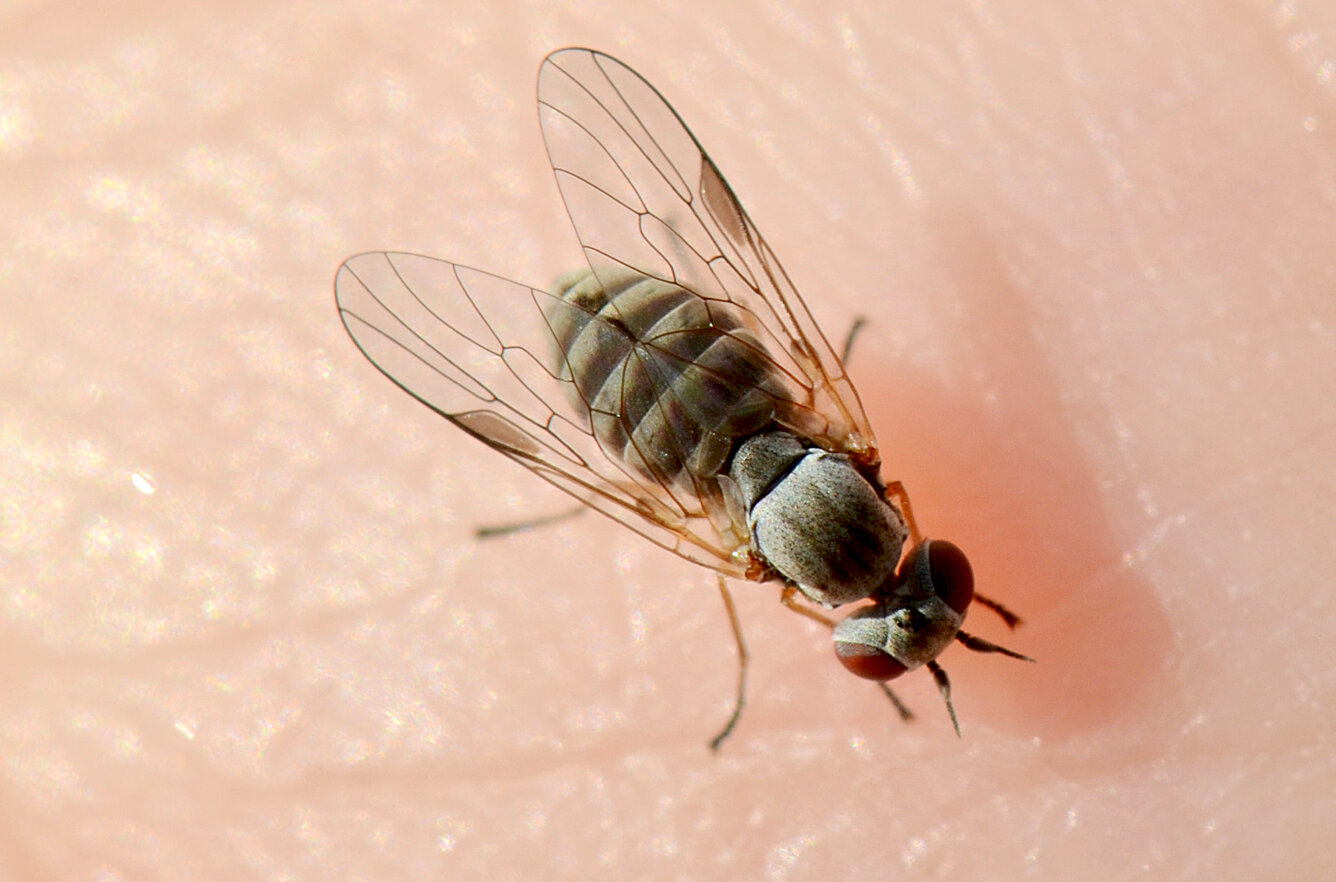Ewwwwww. Buggy Birds.
One little red bug on the coop today, 5 billion tomorrow. Red Coop Mites.
Or a bunch of bugs crawling around my hen’s vent and sticky residue around the base of her feathers. Chicken Lice.
Or rough lifted scales on the legs of my oldest rooster. Scaly Leg Mites.
Bugs happen even in the coops of good chicken moms and dads. It is not a reflection of your care, as they come in on wild birds and there is not much you can do about that, other than get rid of the bugs promptly once they appear. Every time I hold a bird, I check their legs and vents for bug signs, It is so much easier to resolve the problem in the early stages.
The products used are toxic to cats, so we make sure to do this where cats can’t access. If necessary, we set up temporary No Cat fencing.
Red Coop Mites:
Red Coop Mites
These were the worst. They live in the coop and bite the birds at bedtime, draining their strength and vitality. If your birds are reluctant to go into the coop, grab a flashlight and search for tiny red bugs in the cracks and corners. We noticed the bugs in the doorframe of our access panel, scurrying away from the light of day — evil blood-suckers that they are. Sometimes people spot them on the eggs.
Plan A:
If you only see a few, try sprinkling powder Permethrin in the bedding etc. That didn’t work for us, so we upped our game. Be advised, Permethrin is toxic to cats.
Plan B:
Usually Plan B is enough. We buy Ivermectin Pour-On and little syringes. We catch each bird and with a syringe, squirt about 0.045 ml per pound. onto the base of her neck. This works out to about .25 ml for a 5 pound bird, more for bigger birds.
In two weeks, we repeat this.
Please notice that the product is labeled for cattle and this is an Off-Label use. Also notice that I am not telling you that you should use this, merely sharing what we do. As an off-label use, there is no official word on how long one should abstain from eating the eggs. You will need to do your own research in this regard.
Plan C:
This is the most complicated and the most effective. We have only had to do this once, when we were new to chicken-keeping and let it get really bad before we figured out what the problem was.
We start early in the day.
We set up temporary housing for our flock. If you can get an electric poultry net for this project that solves your temporary housing problem and your cat problem all at once. I am considering getting one just to rent out to locals.
We deep clean our coop. Remove everything and burn it or send it to the dump. If you can’t do that, see step 6.
We pressure wash the coop and the ramps and any little crevice that the cooties may be hanging out in, weather permitting.
We bathe the birds
We fill up one large tub with warm water and blue Dawn soap.
Fill an other tub with warm water and liquid Permethrin. Because we have cats, and we love our cats, we do this work in the chicken run where cats cannot access. I don’t know how long the toxin sticks around but I don’t want to risk it, as Permethrin is toxic to cats.
Every bird gets a soak in the sudsy water and a quick dip in the Permethrin water. I wear boots and waders and rubber gloves.
We use the remaining Permethrin-laced water to wash all the removables from the coop, or dump it over our buggy bedding.
We set off a bug bomb in the coop.
We add clean bedding and sprinkle it with powder Permethrin.
We don’t sell the eggs for whatever time period the manufacture suggests. Not that they will lay many as they will be all stressed from the changes.
If we can, we let the birds stay in their temporary housing overnight, and let the coop air out on the second day, returning the birds the next night. If that is not possible, we set up a fan to air it out in the evening and return the birds as late as possible.
Be sure to clean your apparel before you re-enter space where cats live.
Chicken Lice:
Whenever I hold a bird, I check around their vent. If I see things crawling about the vent, I know we have chicken lice. Globs of sticky white things around the base of their feathers are also a clue.
Lice Nits and Eggs at the base of the feathers.
Plan A:
Usually Plan A is enough. We buy Ivermectin Pour-On and little syringes. We catch each bird and with a syringe, squirt about 0.045 ml per pound. onto the base of her neck. This works out to about .25 ml for a 5 pound bird, more for bigger birds.
In two weeks, we repeat this.
Please notice that the product is labeled for cattle and this is an Off-Label use. Also notice that I am not telling you that you should use this, merely sharing what we do. As an off-label use, there is no official word on how long one should abstain from eating the eggs. You will need to do your own research in this regard.
Plan B:
Again, this is the most complicated and the most effective. We have only had to do this once, when we were new to chicken-keeping and let it get really bad before we figured out what the problem was.
We deep clean our coop. Remove everything.
We bathe the birds
Near the coop, we fill up one large tub with warm water and blue Dawn soap.
Fill an other tub with warm water and liquid Permethrin. Be advised, Permethrin is toxic to cats.
Every bird gets a soak in the sudsy water and a quick dip in the Permethrin water. I wear boots and waders and rubber gloves.
I use nail clippers to clip off the feathers that are covered with lice eggs. The eggs should be dead, but I want them gone. I make sure the feathers I clip go into the trash.
We use the remaining Permethrin-laced water to wash all the removables from the coop, or dump it over our buggy bedding.
We add clean bedding and sprinkle it with powder Permethrin.
We don’t sell the eggs for whatever time period the manufacture suggests.
We repeat in two weeks.
Scaly Leg Mites:
Whenever I handle a bird I look at its legs and feet. If the scales are lifted, I know we have bugs living under there. I have never found them on younger birds — seems to be an ailment of the older birds. Foot baths for the biddies:
Near the coop, we fill up one large tub with warm water and Epsom Salts..
We fill another smallish tub with equal parts mineral oil and liquid Permethrin (be advised, Permethrin is toxic to cats), just deep enough to cover their legs. I use a container with a resealable lid and save the oil for next time.
Every affected bird gets a soak in the sudsy water and a nail-brush scrubbing — I angle the brush to get up under the scales
We give just their legs a quick dip in the Permethrin oil mixture I wear boots and waders and rubber gloves.
We use a dedicated paint brush to coat the roosts with Permethrin oil mixture.
We don’t sell the eggs for whatever time period the manufacture suggests.
We repeat in two weeks.
Parasites:
This really deserves its own post, but the quick and dirty version is: Use Corrid for Cocci and Wazine for worms, if you can find it.









